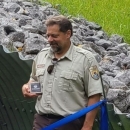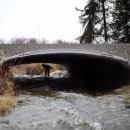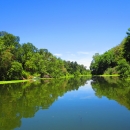Habitat degradation and loss have contributed to the decline of native species throughout the Great Lakes. The coastal waters and watersheds of the Great Lakes are comprised of a variety of wetland and riparian riparian
Definition of riparian habitat or riparian areas.
Learn more about riparian habitat types essential to animals and plants, including many rare, threatened and endangered species. The Aquatic Habitat Restoration Program provides technical and financial assistance to protect and improve habitat for fish and other aquatic organisms. We partner with federal, state, and local agencies, non-governmental organizations, private groups, and individuals to identify, develop, and implement habitat restoration projects on private and public lands in the Lake Erie and Lake Ontario watersheds, and throughout New York State.
The habitat program focuses on improvement projects that benefit species of conservation and management concern and include federal threatened and endangered species, interjurisdictional fisheries, and other significant species. Projects include removing obsolete dams, restoring degraded streams, and planting stream-side vegetation to improve habitat function. Assessment and monitoring are critical components of the program. The office collects biological community and habitat data before and after restoration initiatives to provide assessments of community health and restoration success. We help create schoolyard habitat projects through construction of natural habitat areas on school grounds throughout Western New York using native plants to benefit wildlife. This component of the program provides an interactive opportunity to teach children about nature and how they can help take care of it.






